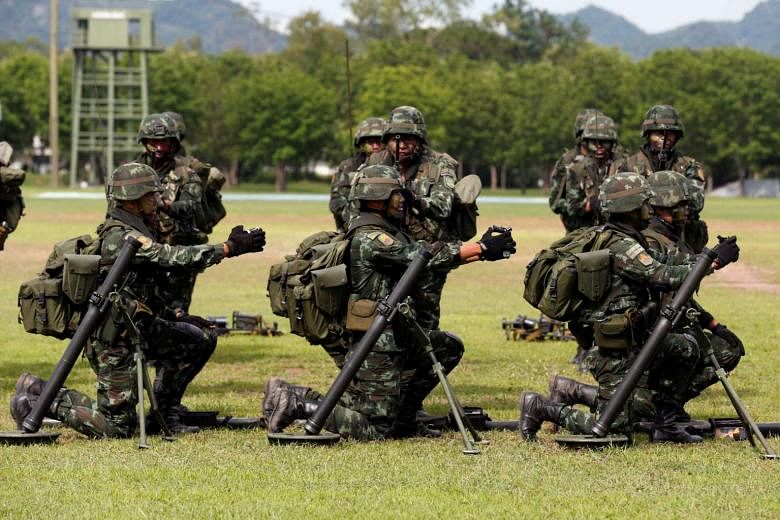In its editorial on 14 July, the paper questions recent decisions on arms and armaments made by the junta-led government.
BANGKOK (THE NATION/ASIA NEWS NETWORK) - At risk to the economy, the junta-led government is decorating fortress Thailand with mismatched weaponry.
The government keeps defending its costly purchases of military hardware as being necessary for national security, and yet no one in the top brass seems to know whether the shaky Thai economy can absorb the outlay. And none of the generals can offer assurance that the new weaponry will be put to optimal use.
The Cabinet on Tuesday approved the Baht8.8 billion (S$356.8 million) purchase of eight T-50 Golden Eagle training jet-fighters from a South Korean company.
The deal pushes total spending on military gear since the junta seized power in 2014 past Baht72 billion. The defence budget has never stopped growing in three years.
What exactly is the government's intention in shopping as if war were imminent? In February it launched a 10-year military-development programme to address perceived major challenges to the country, including non-traditional security threats like the insurgency in the South.
"Modernisation Plan: Vision 2026" has three objectives.
It aims to improve military preparedness and capabilities and to modernise the structure on which national security depends. But specialists in security matters point out that the plan specifies no required military assets or capabilities. It contains only an outline for Thailand to increase defence spending from the existing 1.4 per cent of gross domestic product to 2 per cent by the end of the decade.
Defence Ministry spokesperson Kongcheep Tantrawanit has said the modernisation plan does take into account both possible future scenarios - a healthy economy and a constrained budget. That seems sensible, but military spending in recent years has not reflected the economy's current dire condition, with average annual GDP growth at just 3 per cent. Even as government officials insist the economy is recovering, the realities of daily life suggest otherwise, with millions of citizens struggling to make ends meet.
Prime Minister Prayut Chan-o-cha has pointed out that all government agencies, not just the military, receive budget allocations proportionate to the needs of national development. Farmers have been assisted with tens of billions of baht, he noted. Meanwhile Deputy Prime Minister Prawit Wongsuwan, who as Defence Minister keeps the military shopping list in his pocket, has claimed that every overseas weapons purchase is fully transparent, since they are all government-to-government deals. They are not transparent, however. The top brass refuses to let anyone outside the military scrutinise its procurements, despite the national budget coming straight from the taxpayer. Prawit's talk of trustworthy government-to-government deals in fact guarantees nothing.
Since coming to power, this regime has approved the procurement of 38 tanks, 34 armoured personnel carriers, 10 helicopters, 10 offshore patrol vessels, 12 fighter jets and one submarine. It claims most of these are replacements for old gear. But we've seen tanks chronically under-utilised and helicopters incapable of meeting full expectations due to poor quality. Two AW139 helicopters bought from Italy in 2014 were used for just one year because the contractors provided no spare parts to keep them flying.
Another important factor in this discussion is that the Thai military isn't "synchronising" its arsenal. We basically buy hardware from various sources with no cohesive plan for their combined use. The big purchases lately - tanks and the submarine from China and Black Hawk helicopters and Harpoon Block II missiles from America - aren't necessarily compatible.
More often, though, the problem is simpler - a lack of spare parts or a lack of personnel sufficiently trained to use the gear.
The Nation is a member of The Straits Times media partner Asia News Network, an alliance of 22 news media entities.

